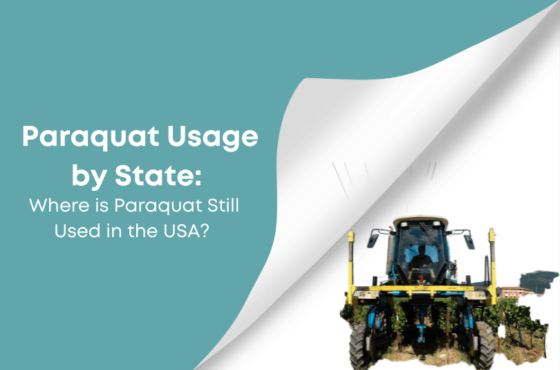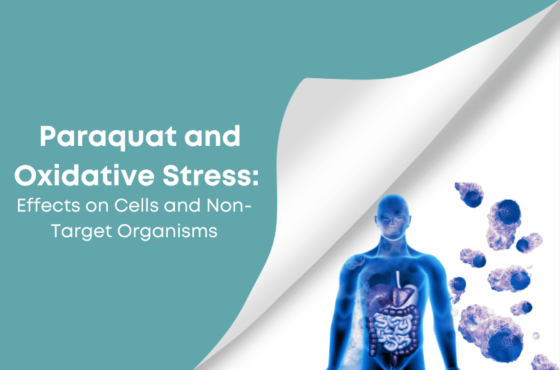Paraquat is classified by the United States Environmental Protection Agency (EPA) as a restricted use pesticide (RUP). This restriction means that only certified pesticide applicators can purchase and mix, load, and apply the herbicide.
In order to be certified as a pesticide applicator, you need to undergo an EPA-approved paraquat training course once every three years. The training covers important information about paraquat, including its toxicity, consequences of misuse, and restriction, among others.
Paraquat is sold in concentrated form and diluted in water and then sprayed on crops. But even though it is not in its purest form anymore, exposure to paraquat can still cause various health problems, one of them being Parkinson’s disease.
The development of this neurodegenerative disease prompted those who had a history of paraquat exposure to file a paraquat herbicide lawsuit. More and more cases are being added to the paraquat multidistrict litigation (MDL) as we speak.
How is Paraquat used?
Paraquat is used as a non-selective herbicide that is designed to kill or damage all green plant tissue it comes into contact with. And because it is formulated to be toxic to any vegetation it contacts, the risk with paraquat is it can also kill desirable plants, so one needs to be extra careful when applying the chemical.
What is Paraquat herbicide dosage?
The paraquat herbicide dosage to be applied on a hectare of spray area may depend on the crop that is going to be treated with paraquat. For instance, for vineyards, 2.5–5.0 liters of the herbicide is sprayed per hectare, also expressed as 2.5-5.0 L/ha. The same amount is applied on potatoes.
On the other hand, for bananas, tea, and coffee, 1.25-5.0 liters of paraquat is needed per hectare. The paraquat formulation needs to be diluted in water to make the spray mix that will be used over a hectare of spray area.
Pesticide applicators and other agricultural workers who experience occupational exposure to paraquat have the highest risk of suffering from paraquat poisoning.
When is Paraquat used?
Paraquat is used when you want to eliminate any undesirable vegetation, whether broadleaf or grassy weeds, to minimize their adverse impacts on crops. But because the chemical will kill any living unwanted weed or plant it comes into contact with, paraquat should be applied carefully, especially around patios, paths, and gardens.
The popular weed killer is also used as a harvest aid desiccant and/or defoliant, which provides greater flexibility of harvest date and creates a more rapid and efficient harvest by reducing leaf trash.
Can I spray Paraquat when it’s windy?
No, you cannot spray paraquat when it’s windy. Strong winds can cause the weed killer to drift and damage other plants you do not intend on killing. Pesticide drift can also put nearby residents at risk of paraquat exposure when they inhale the chemical that has moved through the air.
In general, labels specify wind speeds between three and 10 MPH as the ideal range for spraying herbicides. It is very important to follow label information, as spraying in wind conditions that exceed label restrictions is illegal and can cause paraquat to move from its area of application to any sensitive areas, such as schools and personal properties.
What herbicides contain Paraquat?
While paraquat is commonly sold under the brand name Gramoxone, it is also marketed under various trade names. Other herbicides that contain paraquat are listed below.
- Firestorm: is a formulation of paraquat dichloride manufactured by Chemtura Corporation. It is a contact herbicide that is used for control or suppression of weeds and grasses, and as a desiccant/defoliant at harvest.
- Helmquat: Helmquat is a broad-spectrum, non-selective herbicide that contains paraquat as its active ingredient. It is used as a desiccant and defoliant for a wide array of crops. Helmquat will eliminate most small broadleaf and grass weeds, and suppress perennial weeds through distortion of plant foliage.
- Parazone: As a contact herbicide, Parazone is intended to provide fast and effective control in over 100 crops. Since its formulation also contains paraquat, exposure to Parazone can also cause adverse health effects, including Parkinson’s disease.
- Quik-Quat: a burndown herbicide manufactured by Drexel Chemical Company. Quik-quat is another toxic product containing 43.2% paraquat dichloride that is sold in the U.S. It is also used for the management of weeds and grasses and as a harvest aid.
- Cyclone: a contact herbicide that desiccates and defoliates weeds and grasses in a wide array of crops, including peanuts, potatoes, soybeans, and vegetables. Cyclone contains around 30% paraquat dichloride, which is slightly less than the majority of products in this list that contain the active ingredient. However, it is still highly toxic, which is why applicators need to have proper training and be licensed to handle this herbicide.
Is Paraquat a selective herbicide?
No, paraquat is not a selective herbicide. It is classified as a non-selective herbicide, which means that paraquat will harm or kill any living plant it comes into contact with. Non-selective herbicides are classified as either systemic or contact. Paraquat is a contact herbicide, and the paraquat mechanism of action involves quick killing of unwanted vegetation through immediate contact.
Paraquat is not a selective herbicide, which is another kind of herbicide that works by only targeting and eliminating the specific weed species without harming other plants.
What plants is Paraquat used on?
Paraquat is a popular herbicide that is used on over 100 crops. The plants that paraquat is used on are listed below.
1. Golf courses
The U.S. EPA only banned the use of paraquat on golf courses in 2021. Prior to that, golf course maintenance workers have routinely sprayed paraquat on nearly every inch of the course to maintain the aesthetic appeal of its lush greens, until a Chicago area resident filed a paraquat complaint where he blamed the toxic weed killer for causing his Parkinson’s disease.
2. Rice Fields
Paraquat is commonly used to control weeds in rice fields, especially in parts of the U.S. where almost the entire rice crop of the country is produced. The chemical is usually applied with other mixtures and other residual herbicides before planting rice.
3. Tobacco Fields
Tobacco products require intensive use of herbicides, such as paraquat. Paraquat is known to be very effective in eliminating weeds and preventing further infestation in tobacco fields. This processing of tobacco plants that involves multiple steps in which various chemicals are added make tobacco products even more harmful than they already are.
4. Grapes
Certain formulations of paraquat are registered for grapes in different states across the U.S. Paraquat provides quick burndown of weeds, but should not be applied on young vines, as it can cause injury and eventual vine death.
5. Potatoes
Paraquat is widely used in potato plants as pre-plant or early post-emergence to burndown weeds before planting until such time that the potato sprouts start emerging from the soil. Weeds can compete with potato crops for light, water, and nutrients, as well as interfere with harvesting.
6. Corn
The popular weed killer is heavily used in corn and is applied annually to control weeds and other unwanted plants before planting or as a harvest aid. Its use also allows for immediate corn replanting, but should be mixed with other herbicides for increased effectiveness.
7. Crops
Paraquat is a weed killer that is widely used by farmers to treat a wide range of crops, including soy, cotton, peanuts, wheat, citrus, strawberries, artichokes, and almonds, to name a few. It is estimated that each year, American farmers use over eight million pounds of paraquat.
8. Trees
Paraquat is used to eliminate weed or unwanted vegetation growth in tree crops, including cocoa, coffee, banana, citrus, coconuts, and sugarcane. When new growth appears on trees, it may soften the bark, so paraquat should be applied to kill weeds and to prevent tree injury.
Where can I buy Paraquat?
In the United States, paraquat is available for purchase and use only by licensed pesticide applicators due to its toxicity. Users will need to present the pesticide applicator license or permit issued by their state in order to buy paraquat products.
Do I require training to use Paraquat?
Yes, the EPA requires anyone who intends to use paraquat to undergo a training program every three years in order to use the weed killer. The regulating agency started to require this special training for certified applicators after several deaths and severe injuries have been recorded involving the mishandling of and working with paraquat.
The paraquat training provides important information about mixing, loading, and applying the herbicide, other pesticide-related activities, as well as paraquat safety tips through proper storage, handling, and disposal of the chemical.
Is Paraquat a restricted use pesticide (RUP)?
Yes, paraquat is a restricted use pesticide (RUP), which means its use and purchase is restricted to licensed pesticide applicators only. Restricted chemicals such as paraquat are deemed to have a higher possibility of harming public health, farmworkers, and the environment.
Non certified persons, even under the guidance of a certified applicator, are prohibited from mixing, loading, and applying paraquat. The toxicity of paraquat has long been the reason behind advocacy groups and environmental organizations pushing for a paraquat ban. Tragically, the EPA recently reapproved paraquat, which allows it to be used on a million acres of American farmland for another 15 years.





